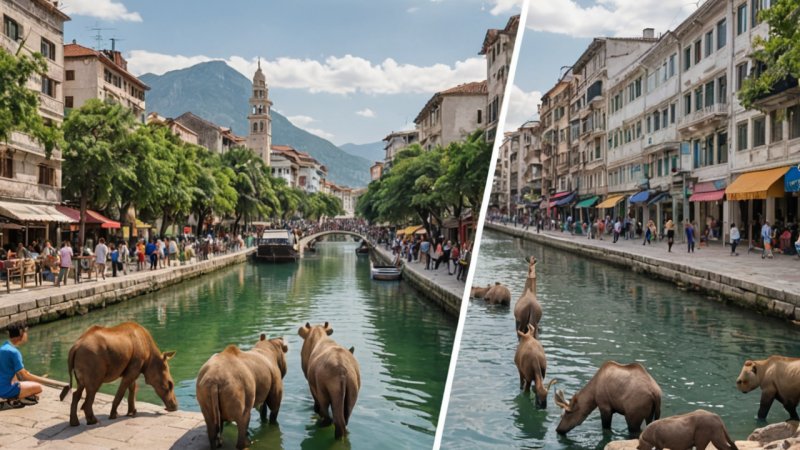Eco-tourism and wildlife protection are two interrelated concepts that have gained significant attention in recent years. As global awareness of environmental issues rises, travelers are increasingly seeking sustainable experiences that contribute to conservation efforts. This article compares eco-tourism and traditional tourism, examining their impacts on wildlife protection, the benefits and drawbacks of each, and how they can coexist to foster a better travel experience while preserving nature.
Understanding Eco-Tourism
Eco-tourism is defined as responsible travel to natural areas that conserves the environment, sustains the well-being of local people, and involves interpretation and education. It emphasizes minimal impact on the environment and promotes conservation efforts. Eco-tourism activities often include wildlife watching, hiking, and staying in eco-friendly accommodations. By engaging with local communities, eco-tourists contribute to the economy and foster a greater appreciation for nature.
Traditional Tourism: An Overview
Traditional tourism typically focuses on visiting popular destinations, often leading to mass tourism that can contribute to environmental degradation. Common activities include sightseeing, shopping, and indulging in local cuisines. While traditional tourism can boost local economies, it often overlooks the importance of sustainable practices and can result in negative impacts on wildlife habitats and ecosystems.
Impact on Wildlife Protection
One of the most significant differences between eco-tourism and traditional tourism is their impact on wildlife protection.
Eco-Tourism and Wildlife Conservation
Eco-tourism promotes wildlife conservation through various means:
- Funding Conservation Projects: A portion of eco-tourism revenue often goes directly to wildlife protection initiatives and local conservation efforts.
- Awareness and Education: Eco-tourism encourages travelers to learn about local ecosystems, species, and conservation challenges, fostering a sense of responsibility and stewardship.
- Habitat Preservation: Eco-tourism can lead to the establishment of protected areas, helping to conserve habitats for endangered species.
Traditional Tourism and Its Challenges
In contrast, traditional tourism can pose several threats to wildlife:
- Habitat Destruction: The construction of hotels, roads, and other infrastructure often encroaches on natural habitats, displacing wildlife.
- Overexploitation: Increased demand for wildlife experiences can lead to overexploitation, such as poaching or capturing animals for entertainment.
- Pollution: Traditional tourism can contribute to pollution, which negatively impacts both terrestrial and marine ecosystems.
Economic Considerations
Both eco-tourism and traditional tourism provide economic benefits, but they differ in their approach to sustainability.
Eco-Tourism Economics
Eco-tourism often supports local communities directly. Local guides, artisans, and businesses benefit from eco-tourists who are more inclined to seek authentic experiences. Additionally, eco-tourism can create jobs related to conservation and sustainable practices, leading to long-term economic stability.
Traditional Tourism Economics
Traditional tourism can generate significant revenue for destinations, but the benefits may not always reach local communities. Large hotel chains and international corporations often dominate the market, resulting in profit leakage. Furthermore, the short-term nature of traditional tourism can lead to economic instability if not managed sustainably.
Social and Cultural Impact
Both forms of tourism have social and cultural implications that are vital to consider.
Eco-Tourism and Community Involvement
Eco-tourism fosters cultural exchange and community involvement. Travelers are encouraged to engage with local populations, learn about their traditions, and participate in community-led initiatives. This interaction promotes cultural preservation and mutual respect.
Traditional Tourism and Cultural Displacement
On the other hand, traditional tourism can lead to cultural dilution or commodification, where local traditions are altered to cater to tourist expectations. In some cases, communities may feel displaced as their lands are developed for tourism purposes.
Conclusion: Striking a Balance
In conclusion, eco-tourism and traditional tourism offer distinct advantages and disadvantages when it comes to wildlife protection and sustainable travel. Eco-tourism presents a model that actively promotes conservation and community involvement, while traditional tourism, though economically beneficial, often overlooks the importance of sustainability. For travelers seeking to make a positive impact, choosing eco-tourism experiences is a more responsible option. However, it is essential for all travelers to be mindful of their impact on the environment, regardless of the type of tourism they choose. By supporting sustainable practices and conservation efforts, we can ensure that our travel experiences contribute positively to the world around us.






